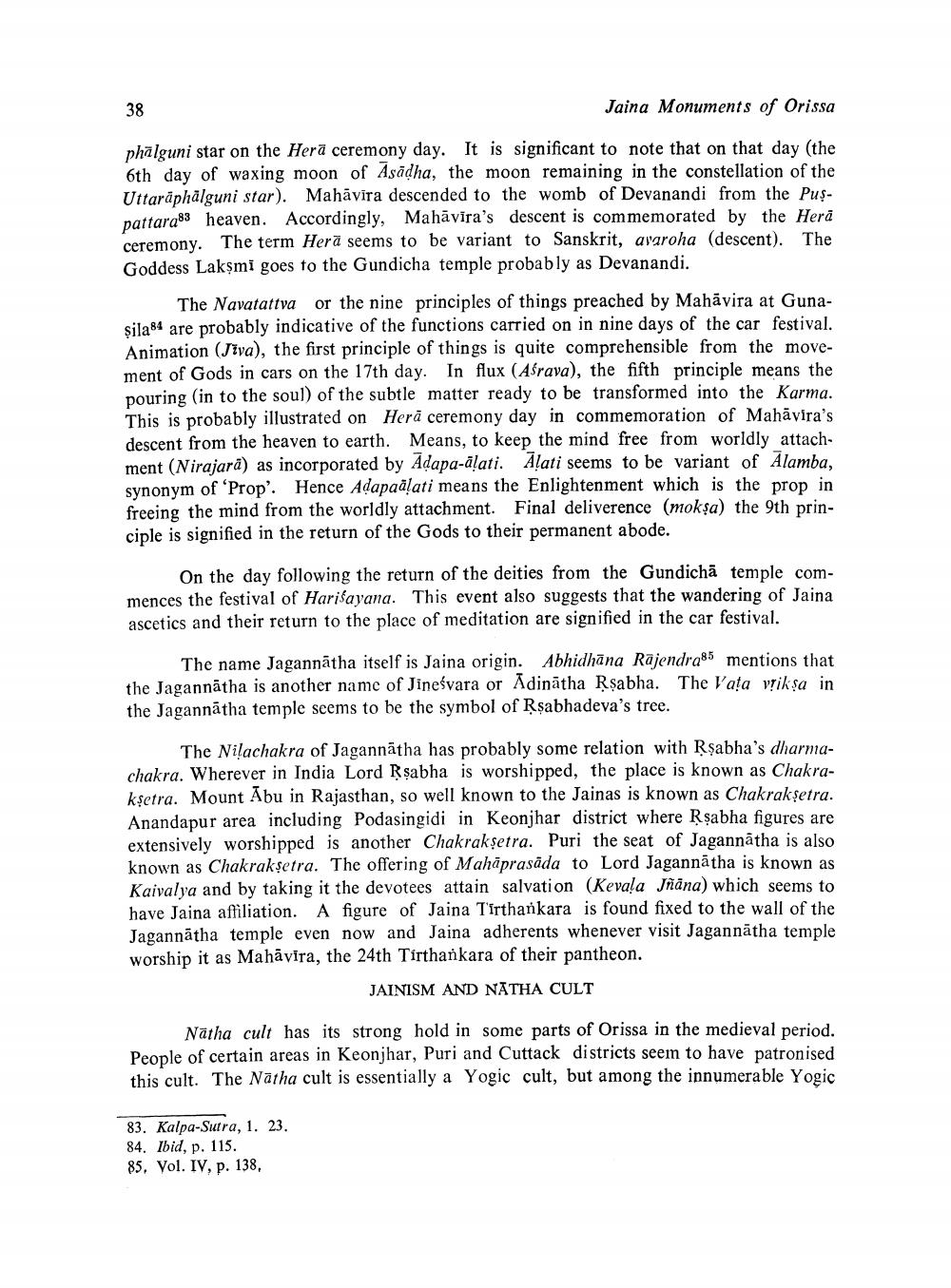________________
38
Jaina Monuments of Orissa
phālguni star on the Herā ceremony day. It is significant to note that on that day (the 6th day of waxing moon of Asādha, the moon remaining in the constellation of the Uttarāphālguni star). Mahāvīra descended to the womb of Devanandi from the Puspattara83 heaven. Accordingly, Mahāvīra's descent is commemorated by the Herā ceremony. The term Herā seems to be variant to Sanskrit, avaroha (descent). The Goddess Lakşmi goes to the Gundicha temple probably as Devanandi.
The Navatattva or the nine principles of things preached by Mahāvira at Gunasila84 are probably indicative of the functions carried on in nine days of the car festival. Animation (Jiva), the first principle of things is quite comprehensible from the movement of Gods in cars on the 17th day. In flux (Aśrava), the fifth principle means the pouring (in to the soul) of the subtle matter ready to be transformed into the Karma. This is probably illustrated on Herā ceremony day in commemoration of Mahāvira's descent from the heaven to earth. Means, to keep the mind free from worldly attachment (Nirajara) as incorporated by Adapa-alati. Alati seems to be variant of Alamba, synonym of 'Prop'. Hence Adapaālati means the Enlightenment which is the prop in freeing the mind from the worldly attachment. Final deliverence (mokşa) the 9th principle is signified in the return of the Gods to their permanent abode.
On the day following the return of the deities from the Gundichā temple commences the festival of Harisayana. This event also suggests that the wandering of Jaina ascetics and their return to the place of meditation are signified in the car festival.
The name Jagannātha itself is Jaina origin. Abhidhāna Rajendra85 mentions that the Jagannātha is another name of Jineśvara or Adinātha Rşabha. The Vața vựik sa in the Jagannātha temple seems to be the symbol of Rşabhadeva's tree.
The Nilachakra of Jagannatha has probably some relation with Rşabha's dharmachakra. Wherever in India Lord Rşabha is worshipped, the place is known as Chakrakşetra. Mount Abu in Rajasthan, so well known to the Jainas is known as Chakrakşetra. Anandapur area including Podasingidi in Keonjhar district where Rşabha figures are extensively worshipped is another Chakrakşetra. Puri the seat of Jagannatha is also known as Chakraksetra. The offering of Mahāprasāda to Lord Jagannātha is known as Kaivalya and by taking it the devotees attain salvation (Kevala Jñana) which seems to have Jaina affiliation. A figure of Jaina Tirthankara is found fixed to the wall of the Jagannātha temple even now and Jaina adherents whenever visit Jagannātha temple worship it as Mahāvira, the 24th Tirthankara of their pantheon.
JAINISM AND NATHA CULT
Nätha cult has its strong hold in some parts of Orissa in the medieval period. People of certain areas in Keonjhar, Puri and Cuttack districts seem to have patronised this cult. The Nātha cult is essentially a Yogic cult, but among the innumerable Yogic
83. Kalpa-Sutra, 1. 23. 84. Ibid, p. 115. 85. Vol. IV, p. 138,




